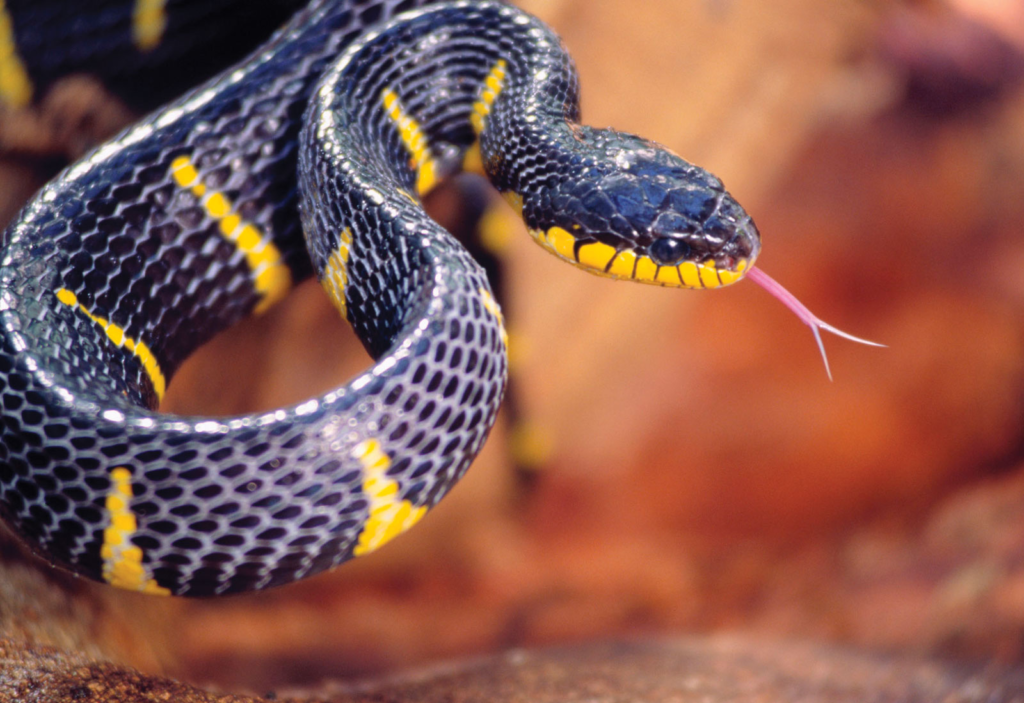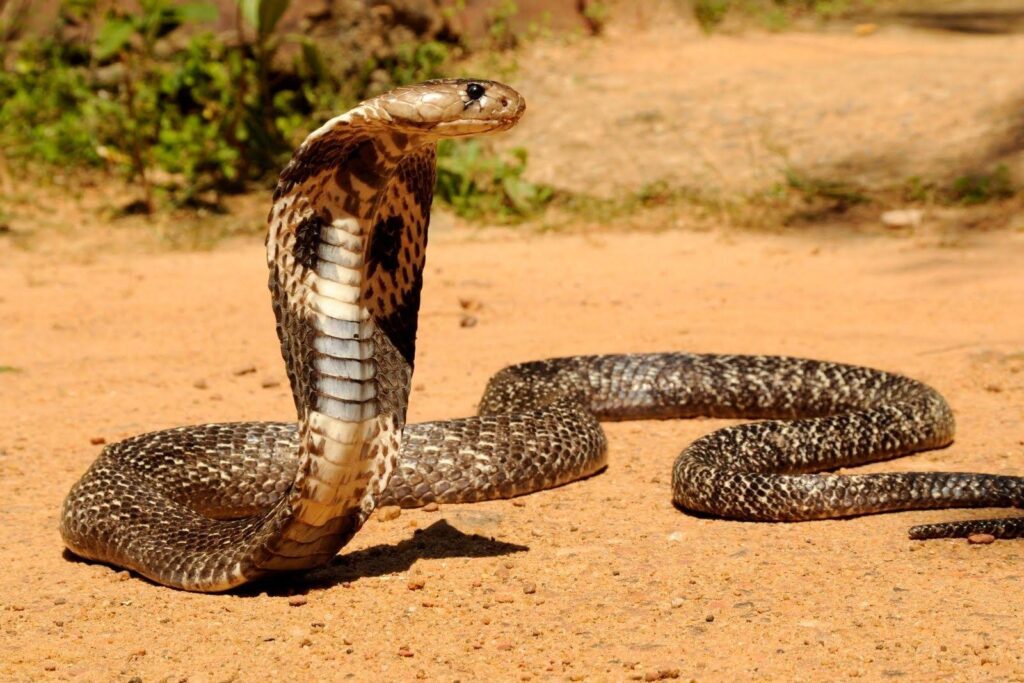Table of Contents
ToggleIntroduction

The interesting world of the animal kingdom comes with a plethora of fascinating relationships and predatory behaviors that attract and arouse curiosity. Will Snakes Eat Cats? One such concern that frequently emerges in wildlife talks is the seemingly unlikely situation of snakes feeding on domestic cats. While snakes swallowing household pets may frighten pet owners, understanding the dynamics of snake behavior, their nutritional preferences, and the habits of domestic felines is critical in evaluating the likelihood of such an occurrence.
First, it is critical to recognize the diversity of snakes, a vast and diverse group of reptiles spanning continents and environments. Snakes are well-known for their adaptability, having evolved to occupy various environments ranging from lush jungles to arid deserts.
Snake Diversity And Behaviors
Range of Snake Species: The world of snakes encompasses an astonishing variety of species, each uniquely adapted to its environment. The range of snake species is vast, from the massive pythons of tropical rainforests to the venomous vipers in arid regions. Some snakes are arboreal, easily navigating tree canopies, while others are burrowers, expertly navigating underground environments. The geographical distribution of snake species plays a crucial role in shaping their interactions with potential prey, including domestic cats.
Varied Hunting Methods (Constriction, Venom): Snakes have evolved distinct hunting methods tailored to their ecological niche. Constrictors, such as pythons and boas, subdue their prey by coiling around them and applying pressure to restrict breathing. In contrast, venomous snakes, like vipers and cobras, employ toxins injected through fangs to immobilize and digest their prey. The diversity in hunting strategies reflects the adaptability of snakes to a range of environments and the availability of different prey items.
Dietary Preferences and Adaptations: The nutritional preferences of snakes are as varied as their hunting methods. While some species are strict carnivores, relying on a diet of small mammals, birds, and reptiles, others may incorporate amphibians, fish, or even insects into their meals. Habitat, climate, and prey availability frequently swayed these dietary preferences. Snakes are opportunistic feeders, adjusting their diets based on the resources in their surroundings. Adaptations in jaw structure and digestive systems further enhance their ability to consume and digest prey items that may seem disproportionately large.
Domestic Cat Characteristics
Agile and Adept Hunters: Domestic cats are renowned for their innate hunting abilities. Their elegant bodies, sharp claws, and keen senses make them effective predators. Cats exhibit exceptional coordination and reflexes, allowing them to precisely stalk, pounce, and capture prey. This agility serves them well in the pursuit of small mammals, birds, and insects and contributes to their ability to navigate and escape potential threats in their environment.
Instinctive Behaviors and Self-Defense Mechanisms: Cats possess a range of automatic behaviors and self-defense mechanisms that have evolved over centuries. When faced with a potential threat, a cat may arch its back, puff up its fur, and emit hissing sounds to intimidate adversaries. Their retractable claws and sharp teeth are formidable weapons when confronted with danger. Cats are also adept at climbing, which not only aids in hunting but provides an escape route when faced with ground-level threats. These automatic behaviors, honed through generations of evolution, contribute to the cat’s ability to navigate and survive in various environments.
Outdoor Exploration Habits: Many domestic cats naturally desire outdoor exploration. Their curiosity leads them into yards, gardens, and neighboring areas, exposing them to potential encounters with wildlife, including snakes. While outdoor exploration provides mental stimulation and exercise, it also necessitates an awareness of potential risks. Cats may encounter a variety of creatures, from insects to small mammals, during their outdoor excursions. Understanding their propensity for exploration is crucial in evaluating the potential interactions with snakes in regions where these reptiles are present.
Interactions Between Snakes And Cats
Rare Documented Cases of Snake Predation on Cats: Snakes actively preying on domestic cats are relatively uncommon. While snakes possess the ability to capture and consume prey that may include small mammals, the size disparity between most snakes and cats makes successful predation events rare. Documented cases often involve:
- Smaller snake species and kittens.
- Highlighting the importance of considering the specific snake and cat species.
Factor Influencing Potential Encounters: Several factors contribute to the potential for interactions between snakes and cats. Geographic location plays a crucial role, with regions inhabited by venomous snakes presenting an increased likelihood of encounters. The presence of suitable habitats, such as gardens, wooded areas, or properties with diverse vegetation, may attract both snakes and cats. Additionally, environmental conditions, such as warmer temperatures that attract snakes and the availability of prey items, influence the likelihood of these interactions.
Instances of Cats Avoiding or Confronting Snakes: Cats, are equipped with acute senses and instinctual behaviors. Often demonstrate an ability to detect and respond to the presence of snakes. Some cats may actively avoid areas where snakes are present. Using their keen sense of smell to detect the scent of potential threats. Others, driven by their predatory instincts and territorial behaviors, may confront snakes. Especially if they perceive them as intruders in their territory. The outcome of such confrontations can vary, with some cats successfully deterring snakes. While others may become the target of defensive behaviors from the snake.
Geographical Considerations

Regions with Venomous Snake Populations: Venomous snakes are distributed across various areas globally, with specific species adapted to different climates and ecosystems. Venomous snakes often exist in North America, Australia, Africa, and Southeast Asia. Species like rattlesnakes, copperheads, adders, or vipers are examples of venomous snakes that may inhabit specific geographic locations. Recognizing the local snake fauna and awareness of the presence of venomous species is essential for assessing the potential risks for domestic cats.
Impact on the Likelihood of Interactions: Venomous snakes in a given region significantly influence the likelihood of interactions between snakes and cats. Venomous snakes may pose a potential threat to pets, especially if cats can roam freely outdoors. The risk of envenomation increases when cats encounter venomous snakes. Particularly if the felines are curious or attempt to engage with the snakes. Understanding the behaviors of both snakes and cats in response to each other’s presence is essential in evaluating. The potential for interactions in regions with venomous snake populations.
Implementing Preventative Measures: Pet owners residing in regions with venomous snake populations should take proactive steps to minimize potential risks. Creating secure outdoor spaces, such as enclosed gardens or catteries, can limit a cat’s exposure to snakes. Additionally, pet owners can undertake measures to make the environment less attractive to snakes. Such as removing potential hiding spots like tall grass, piles of debris, or rock formations. Awareness and education about local snake species and their habitats empower pet owners to implement effective preventative measures, ensuring the safety of their feline companions.
Conclusion
The immense diversity within the snake kingdom, from constrictors to venomous species. Demonstrates these reptiles’ resilience to a wide range of habitats and nutritional niches. On the other hand, most snakes have a prey preference related to their size and skills. Such interactions are infrequent due to the inherent risk of attempting to consume a larger and potentially aggressive animal, such as a household cat. Furthermore, cats’ protective instincts, quickness, and strong senses serve as deterrents in snake confrontations.
Domestic cats with inherent hunting instincts frequently explore outdoor habitats where they may encounter various wildlife. While encounters between cats and snakes sometimes occur, snakes actively preying on cats are uncommon.







